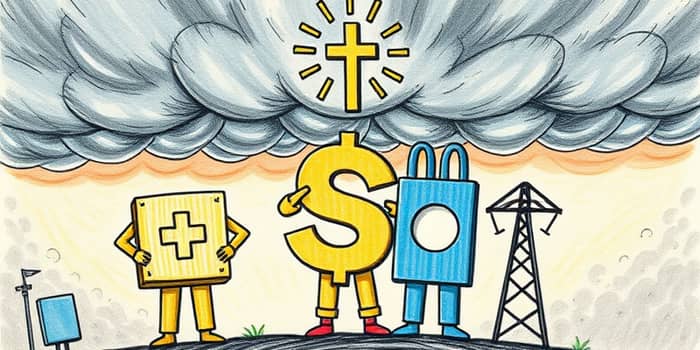
As economic warnings flash, investors are seeking shelter in time-tested industries. The battle between growth and stability is intensifying, and defensive sectors are emerging as the winners of 2025.
In the face of slowing growth and tariffs, traditional defensive sectors have outpaced the broader market. Year-to-date, SPY returned -1.6%, while XLV (healthcare) rose 7.7%, XLP (consumer staples) gained 4.4%, and XLU (utilities) climbed 3.1%. Remarkably, the utilities sector has surged 10.7% in 2025, claiming the top spot among all sectors.
Individual stalwarts are leading this advance. Philip Morris and CVS Health have each posted gains above 53%, IBM is up 29.7%, and other defensive names like Verizon, AbbVie, Chevron, and Pfizer continue to deliver reliable performance and attractive yields.
*Some utility subgroups have climbed as much as 10.7%.
As recession signals grow louder, the allure of predictable earnings and steady cash flow intensifies. Defensive sectors offer three key advantages:
This rotation reflects a broader shift from high-growth, cyclical stocks—such as technology and consumer discretionary—that have faltered under recession fears. Apple’s underperformance, for example, has weighed on many benchmarks, underscoring the capital flight to safety.
Building a resilient portfolio requires balance. A blend of defensive equities, high-quality bonds, and selective growth positions can help investors weather downturns while capturing upside when markets recover.
Key strategies include:
While defensive sectors have delivered strong returns, valuation risks loom large. By mid-2025, many consumer defensive and utility stocks are trading at or above fair value, driven by heavyweight names like Costco, Walmart, and Procter & Gamble.
Excluding those outliers, the broader staples segment actually sits at a 6% discount to fair value. However, utilities and financials appear more stretched, with fewer companies rated highly by analysts. Should sentiment swing back toward growth, overvalued defensive names could suffer sharper corrections.
Investors should remain mindful of:
Although recessions tend to last less than a year on average, defensive positioning can offer critical protection during extended downturns. The challenge is to maintain agility—nestling defensive anchors in a broader portfolio without forgoing exposure to growth opportunities.
Long-term investors may consider a core-and-satellite approach, where stable, income-generating staples and utilities form the portfolio’s foundation (“core”), while selective growth and cyclical holdings pivot with shifting market narratives (“satellite”).
In an environment marked by slowing consumer spending, elevated geopolitical risks, and potential further tariff escalations, defensive sectors will likely continue their outperformance. Yet, enduring success depends on disciplined rebalancing, vigilant valuation oversight, and readiness to reallocate when the economic horizon clears.
Ultimately, the rotation into healthcare, consumer staples, and utilities in 2025 underscores a timeless lesson: prioritizing stability and income can be the wisest defense against uncertainty.
References













